
Improperly sealed fireplaces are noted as being one of the worst heat loss areas in the home, costing you money in home heating bills. A closed fireplace damper is often the largest and most neglected hole in the exterior envelope of a house. Dampers are intended to close off the chimney, but are often left open. When dampers are closed they do not provide a good seal and are quite ineffective due to heat warping.
In a 1990 study, designed to measure the leakage area of fireplace with and without the damper closed, Energy Options Northwest had this impressive finding; the effective leakage area (ELA) of the fireplace dampers averaged about 30 square inches when closed. As a frame of reference, the total ELA of typical houses built to moderately tight standards is between 70 and 120 square inches. This is like leaving a door open for all of you costly home heating/cooling to escape through.
Open fireplaces also allow annoying and uncomfortable downdrafts. Back drafting brings cold air in winter that must be heated, and warm air in summer that must be cooled.
A complaint we often hear is that windows and doors seem to have a cold breeze coming through them. This is caused by a condition known as the stack effect . Between the higher and lower pressure zones of the home lies a neutral pressure zone. The neutral pressure zone tends to move toward the largest air leak. The chimney's neutral pressure zone is above the neutral pressure zone of the house. This creates a flow of air out the chimney even when no fire is burning. As the large volume of air is drawn up the chimney, warm air from other areas of your house goes up the chimney, too. This robs heat from the other rooms and pulls cold air into the home through cracks around windows and doors that have not been completely sealed . Sealing the fireplace helps stop the 'breeze' coming from your doors and windows.
The Fireplace Plug is the solution to your high energy costs. It has been extensively tested to ensure you are getting the very best product at the most reasonable price.
We are proud to say that The Fireplace Plug is 100% Made in The United States of America!
The Fireplace Plug is an inflatable, reusable product designed to fit into the firebox just below the damper and seal the fireplace from energy wasting air leakage, downdrafts, noise, odors, pests and harmful toxins. It comes with a telescoping prop device attached for easy installation or removal and can be set to the desired height in your firebox.
The Fireplace Plug is made from a very durable 14 ml. polyurethane. The material we use was specially formulated for our product in order to withstand the acid that can form when normal fireplace soot combines with moisture to form a creosote which will burn most comparable materials.
The Fireplace Plug is sealed using a process known as radio frequency welding. This process is far superior to heat or adhesive sealing processes. The seals are so strong that a man of average weight can stand on an inflated Fireplace Plug without breaking it. Under most conditions the Fireplace Plug will not puncture, however, we do advise removal of rough concrete edges or sharp metal objects in the sealing area of your firebox.
The Fireplace Plug comes with a fluorescent orange warning label attached to the pole that is clearly visible should you prepare to build a fire. If, despite the warning, you fail to remove the Fireplace Plug before lighting a fire testing by Warnock Hersey Labs in British Columbia found the Fireplace Plug melted , fell onto the fire and smothered the flames. 100's of units were destroyed during the testing and in every case the Fireplace Plug did not pose a fire hazard, therefore it was deemed to be a passive product.
With the high costs of home heating and cooling a Fireplace Plug can save you 100's of $$ on your annual energy bills. This inexpensive solution not only pays for itself in 1 or 2 bills it will continue to save you money for years to come.
Removes easily whenever you want to have a fire. Simply release a little air to slightly deflate the plug then pull out the plug and place in a trash bag between uses. After the fireplace has cooled simply reinsert the plug back into the fireplace.
Beware of other products that are inserted into the chimney. The chimney is full of soot and creosote that should not be disturbed. If you attempt to remove a plug from the chimney you can create a sooty mess all over your house and yourself.
INSTALLATION PICTURES
Here are 3 tips that should assist you with a fast and easy install for our large plug:
1. Lower the air pressure so the plug is not hard. If you put in too much air it will become stiff
and could create gaps. The plug should seal all gaps and conform to the
shape of the fireplace.
2. Lower the pole and install in a "V" not a "^". After you insert it tuck
the front and back up. Then add a little more air so it seals.
3. Please note that it is not always necessary to make a slit to accommodate
the damper handle. Trial fit the plug first without making any slit for the
damper handle. If the damper handle is in the way, open the damper to move
the handle, or remove the handle temporarily.
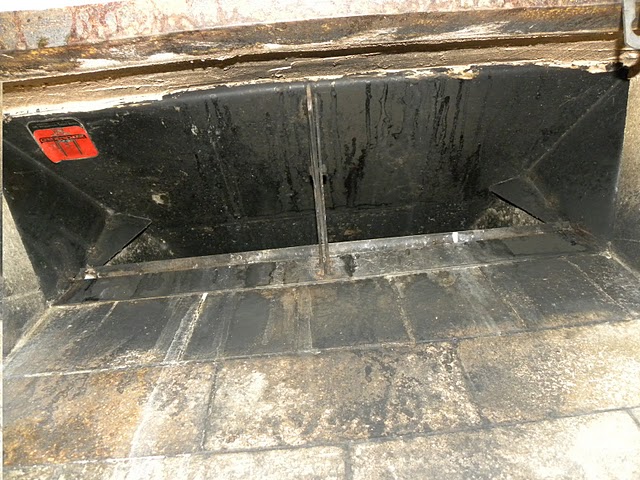
Masonry fireplace (your fireplace may look different - our plug conforms to most any size and shape). The plug fits under the damper (Not Up The Chimney) and covers damper hardware.
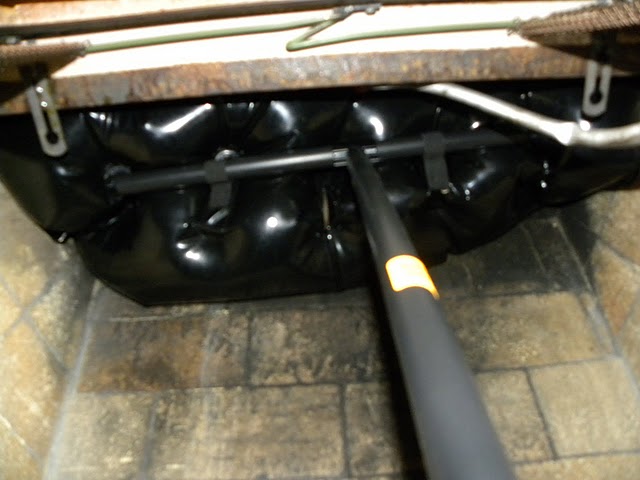
Install the back side of plug against back wall, then push the pole up, and tuck the front of the plug up. This creates a "V" shape that seals well. Tuck the sides up as needed.
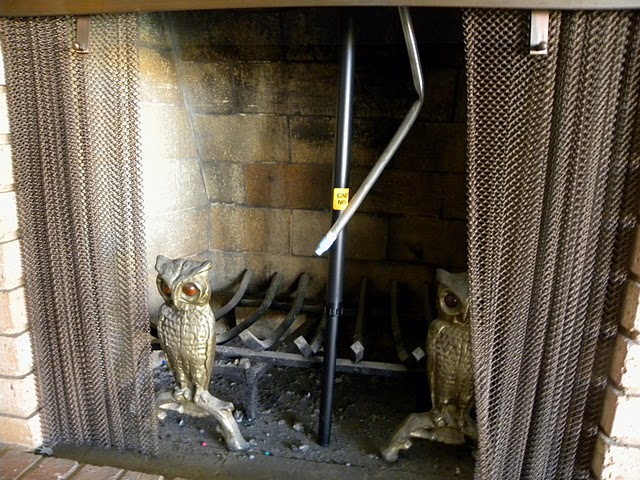
The pole verifies that the damper is sealed - think of it as a "Damper Alarm". No pole visible means damper is leaking.
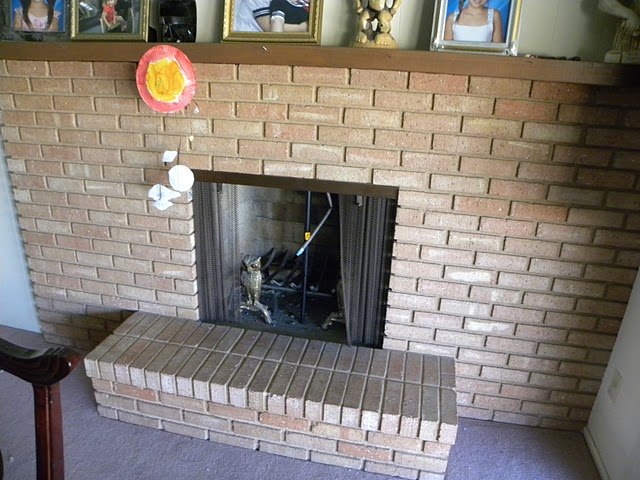
MADE IN USA! The installed plug is very unobtrusive. Tuck blow tube out of site. Place logs in front of pole if desired. Impossible to start a fire without noticing the plug is installed!
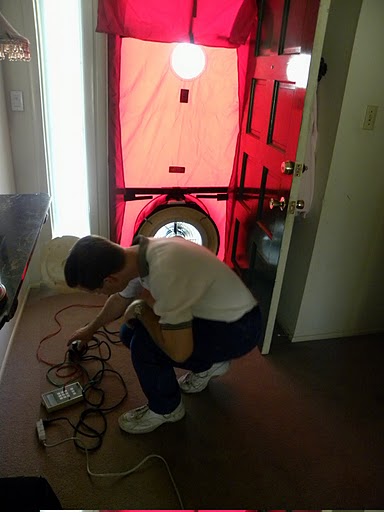
Blower door testing has confirmed significant air leaks through closed dampers, and significant savings by sealing the damper with the fireplace plug!